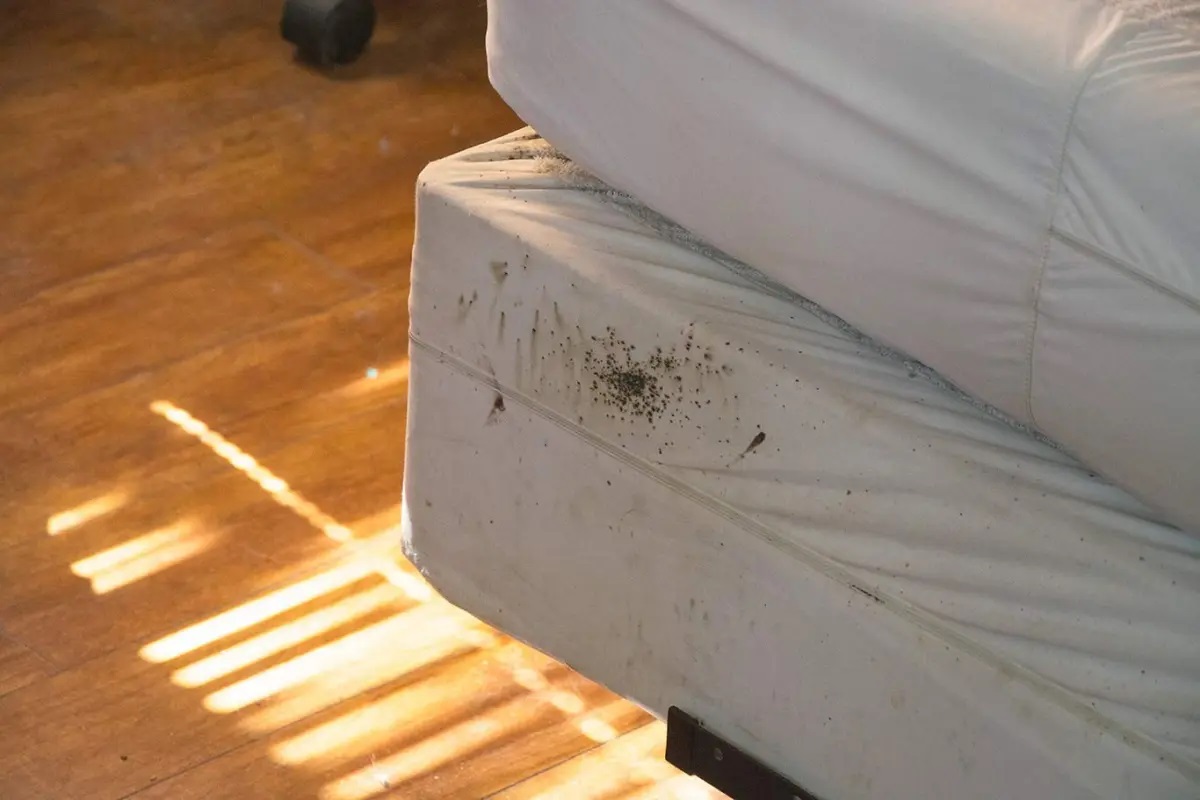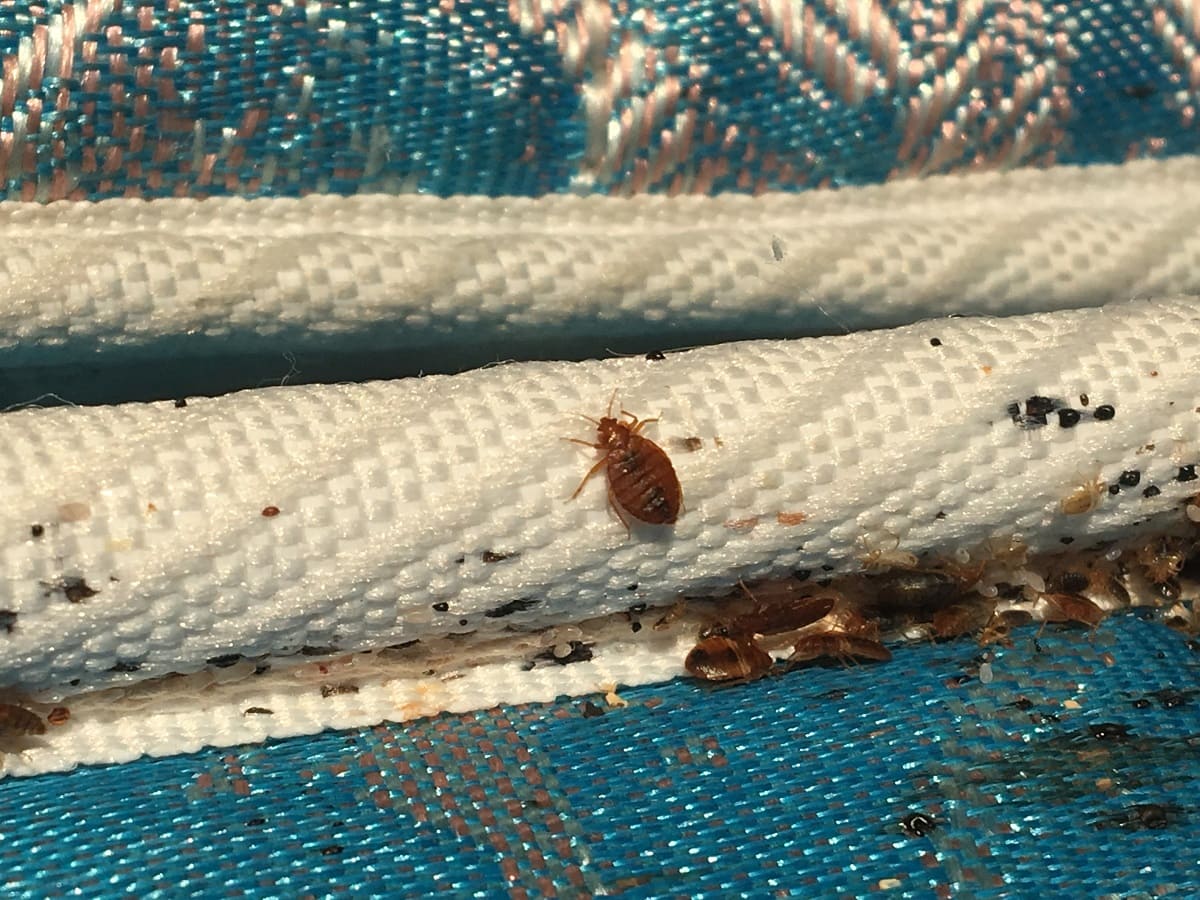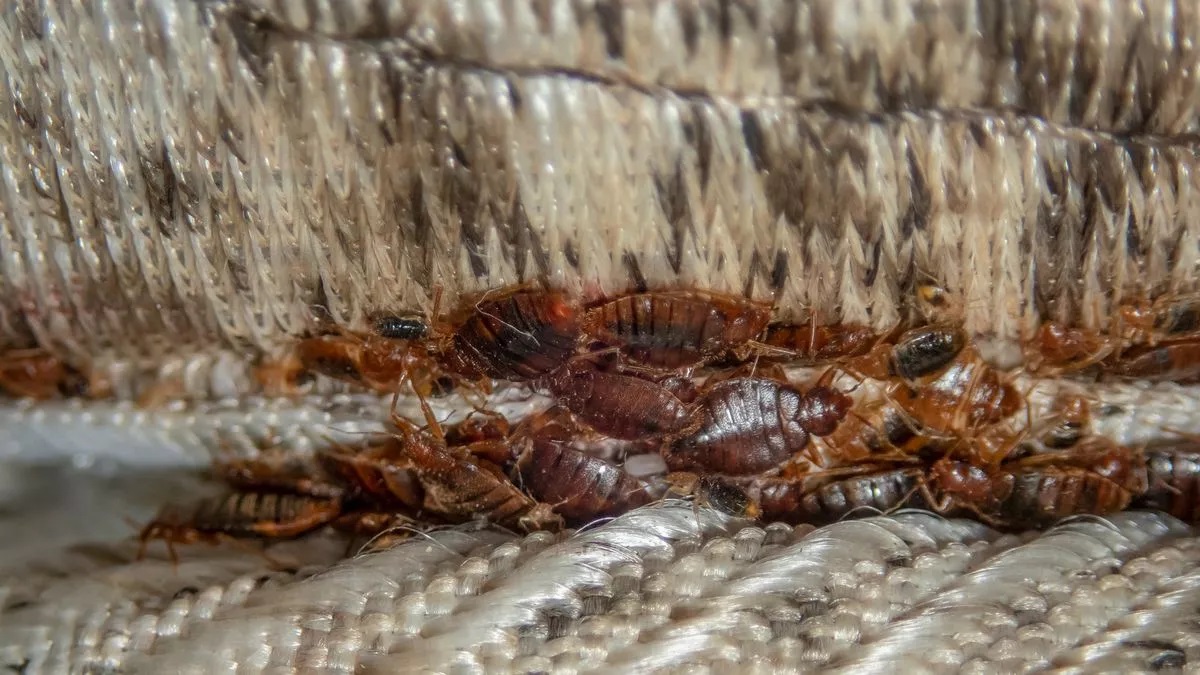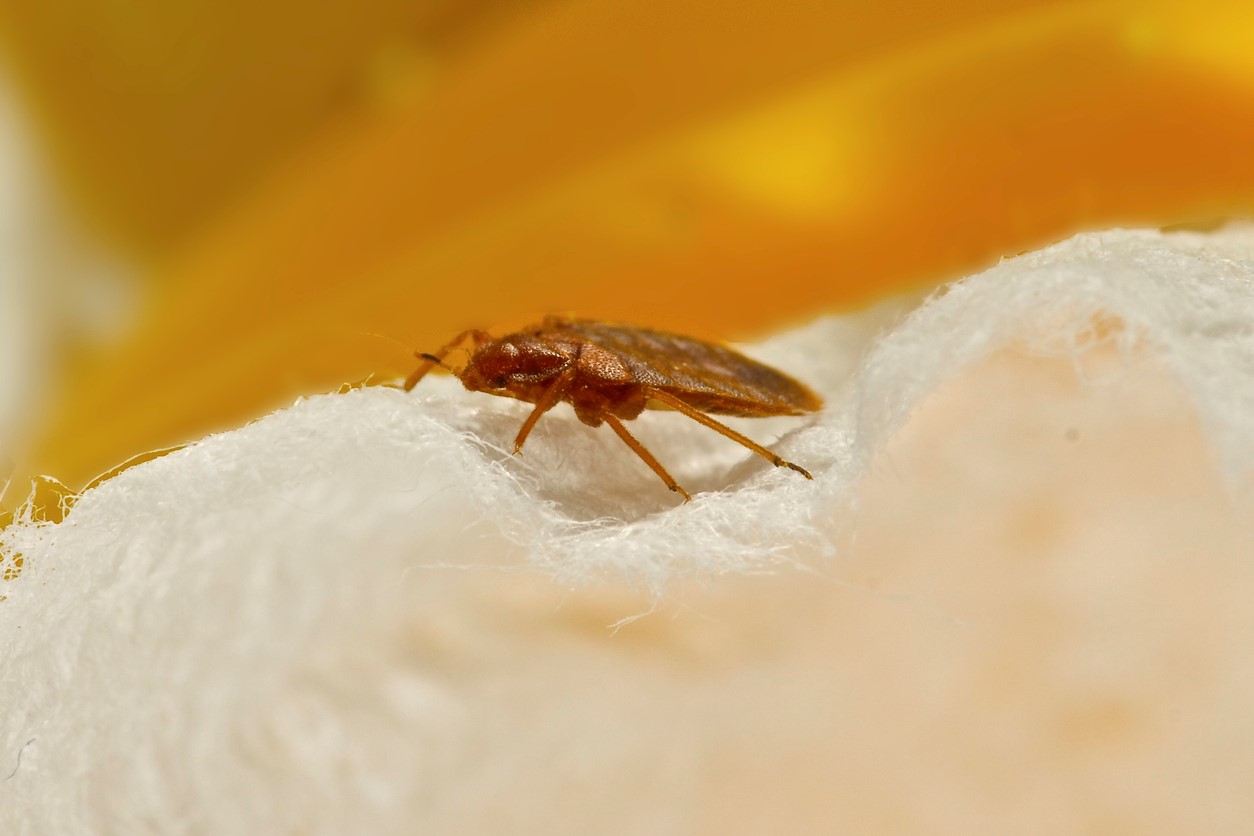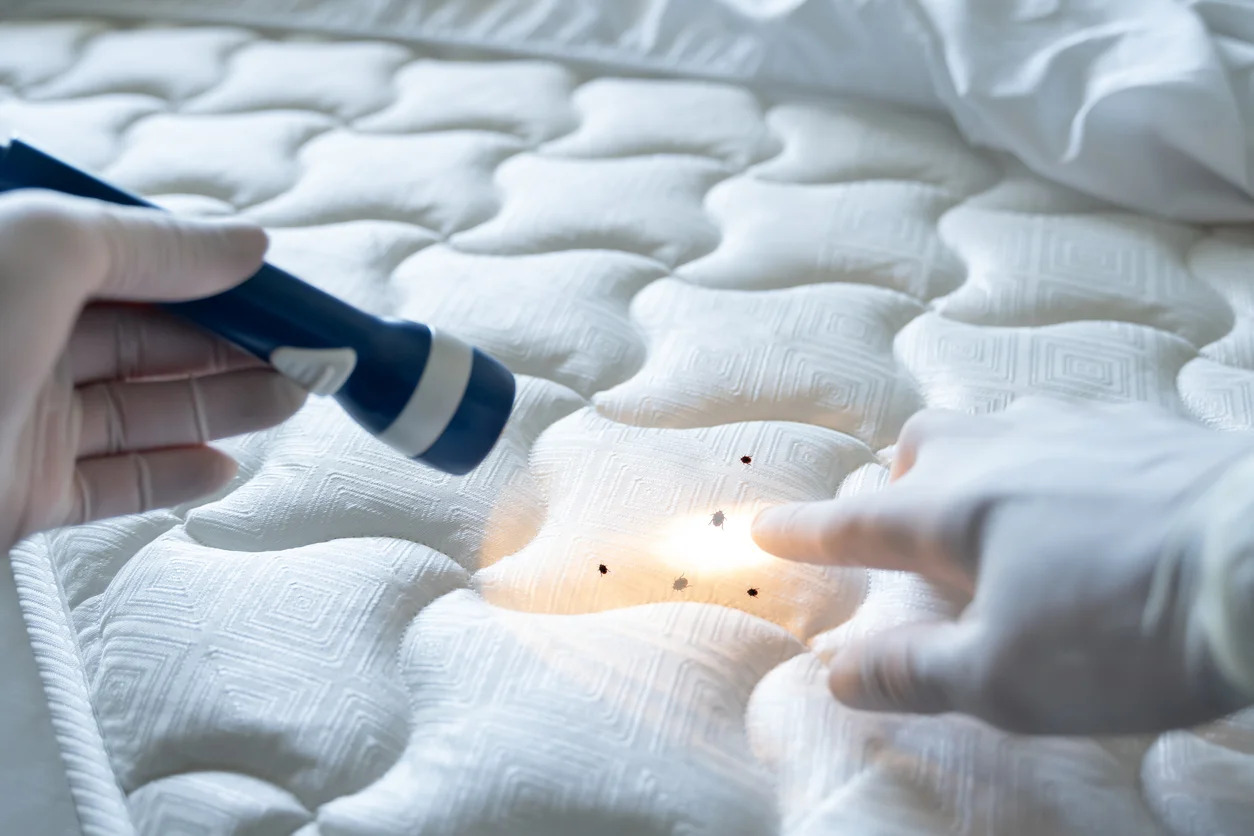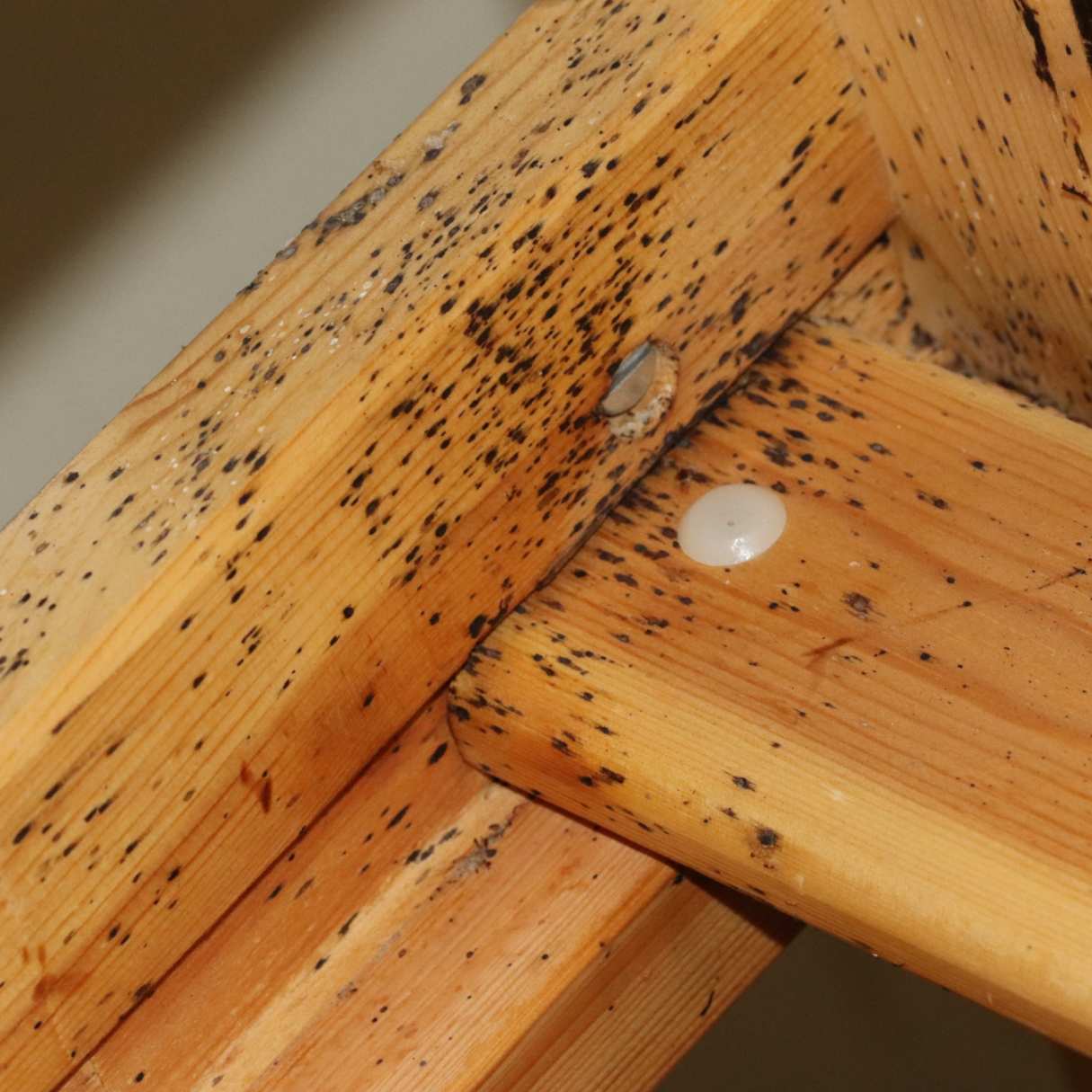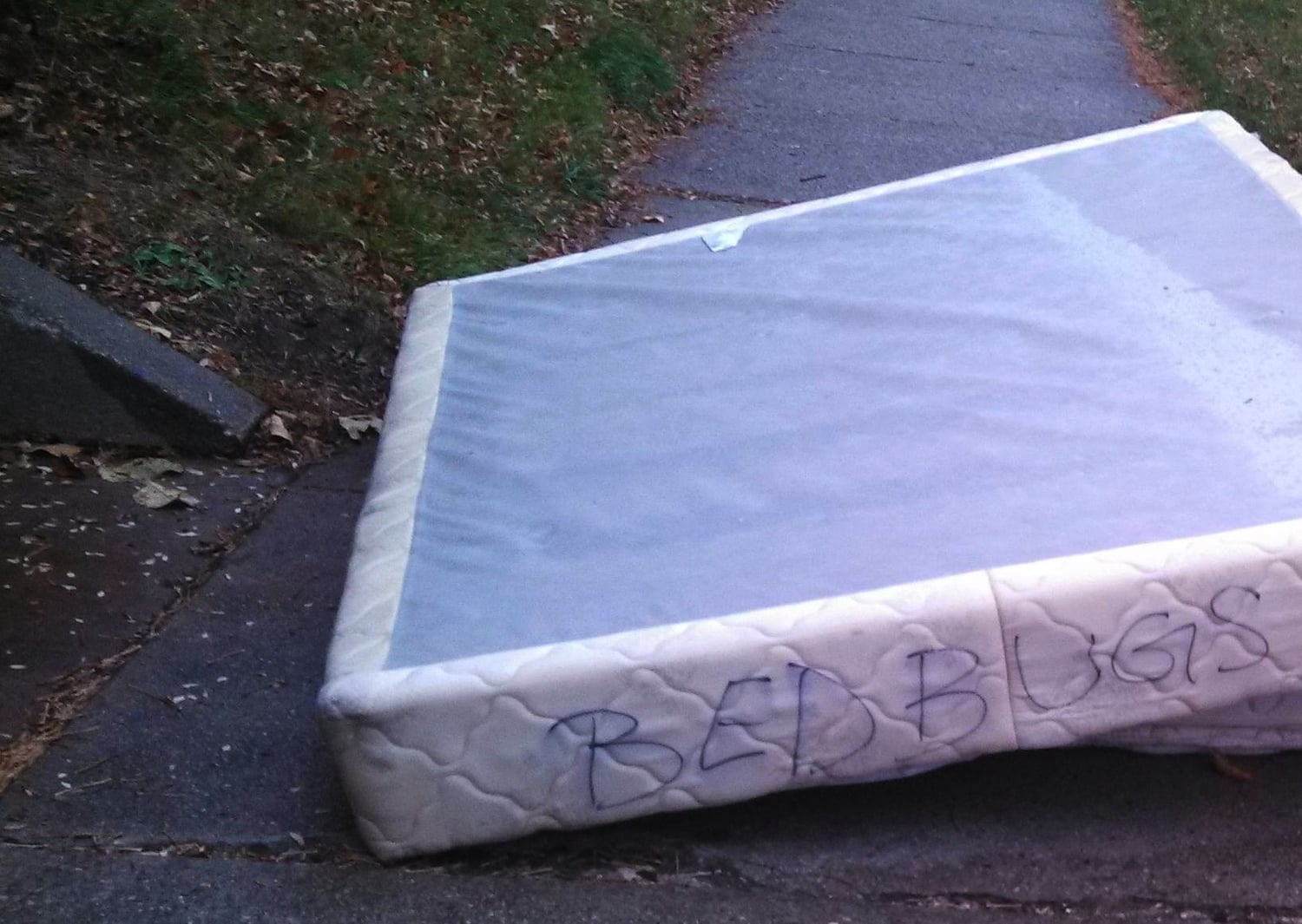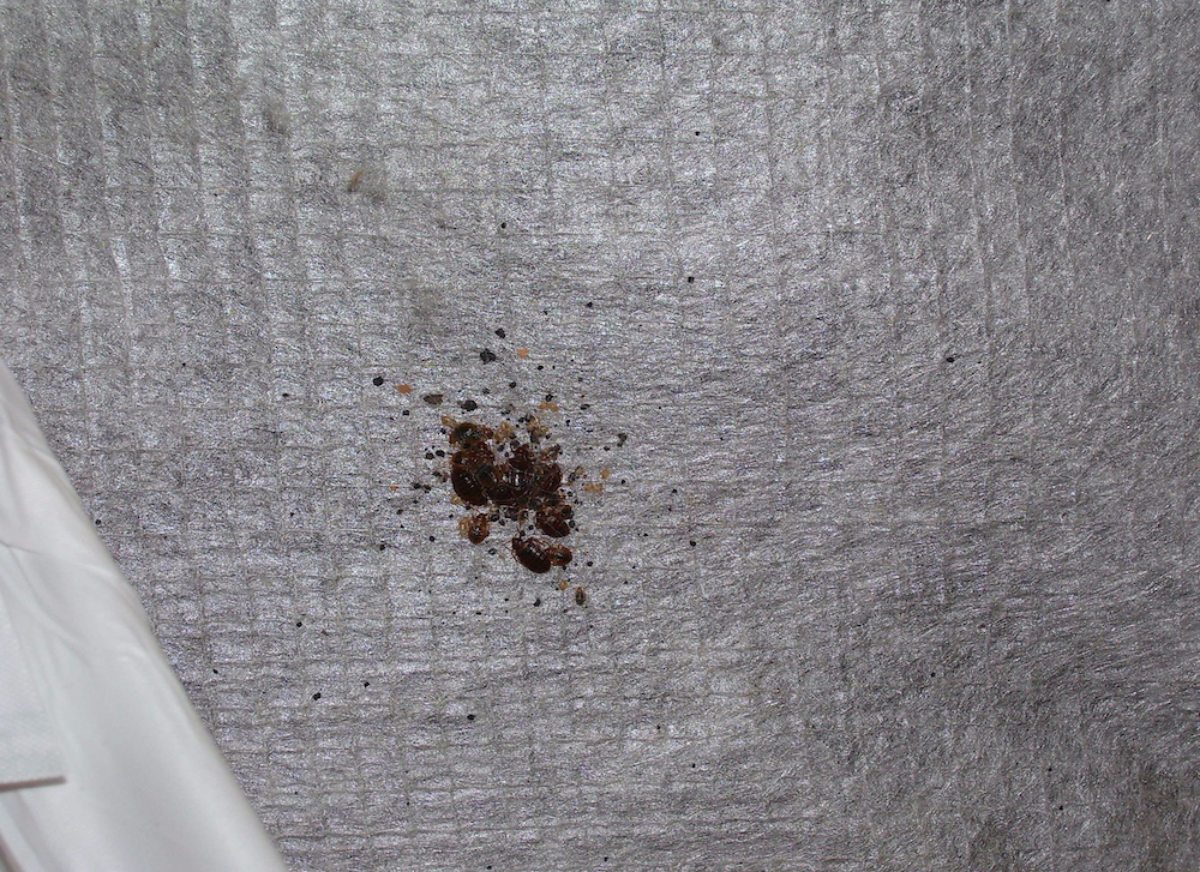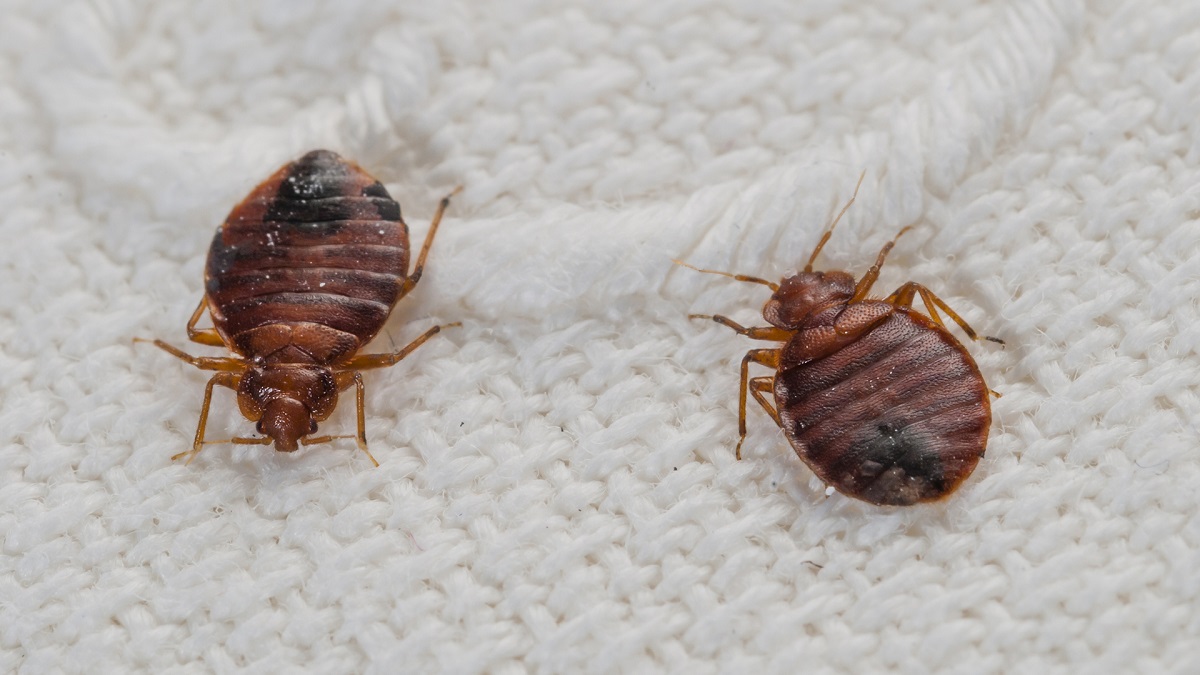Home>Furniture>Bedroom Furniture>How Big Are Bed Bugs
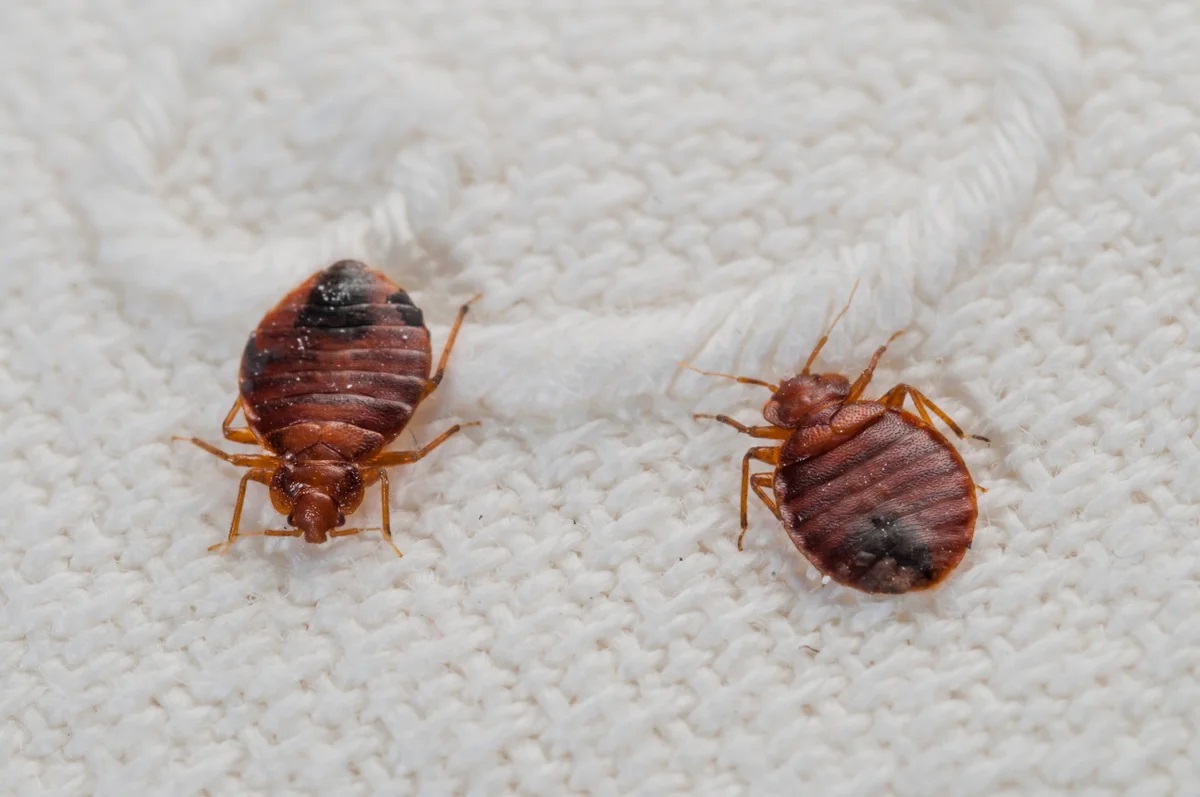

Bedroom Furniture
How Big Are Bed Bugs
Modified: October 23, 2024
Discover the true size of bed bugs and how they can affect your bedroom furniture. Learn more about preventing and treating bed bug infestations.
(Many of the links in this article redirect to a specific reviewed product. Your purchase of these products through affiliate links helps to generate commission for Storables.com, at no extra cost. Learn more)
Introduction
Welcome to the world of bed bugs – those tiny, elusive pests that can infest our bedrooms and wreak havoc on our sleep and peace of mind. Bed bugs are a type of nocturnal insect known for their ability to hide in cracks and crevices, making them difficult to detect and eliminate. Whether you’ve experienced a bed bug infestation firsthand or simply want to learn more about these resilient creatures, this article will explore the appearance, size, lifecycle, feeding habits, signs of infestation, health risks, and prevention methods associated with bed bugs.
Imagine waking up in the middle of the night, itching and finding small red welts on your body. You suspect it could be bed bug bites, but you’re not entirely sure. Understanding the appearance and size of bed bugs is crucial in identifying and managing an infestation. So, let’s delve into the fascinating world of bed bugs and uncover the secrets behind their presence in our bedrooms.
Key Takeaways:
- Understanding the appearance, size, and lifecycle of bed bugs is crucial for effective identification and control of infestations, helping to restore peace and comfort to our bedrooms.
- Recognizing the signs of a bed bug infestation, addressing health risks, and implementing prevention methods are essential for minimizing the impact of these pests and maintaining a comfortable living environment.
Read more: How To Kill A Bed Bug
Appearance of Bed Bugs
Identifying bed bugs can be challenging, as they are skilled at hiding in various nooks and crannies. Adult bed bugs have a distinct oval-shaped body with a flat profile. They are typically reddish-brown in color, although their appearance may change depending on their feeding status. After a blood meal, their bodies become engorged and take on a darker hue. Their size ranges from 4 to 5 millimeters in length, which is roughly the size of an apple seed.
Bed bugs have six legs and two antennae that protrude from their head. Their bodies are divided into three segments: the head, thorax, and abdomen. Along the sides of their abdomen, you may notice tiny hairs which are visible under magnification. These hairs help bed bugs navigate through different surfaces and contribute to their ability to cling onto fabric and furniture.
Despite their name, bed bugs are not confined to beds alone. They are excellent hitchhikers, capable of infesting a multitude of items such as luggage, clothing, furniture, and even electronics. Due to their ability to hide in tiny cracks and crevices, they can often be found in mattress seams, headboards, box springs, behind loose wallpaper, and in electrical outlets. Understanding their appearance and common hiding spots is essential for effective inspection and control.
Size of Bed Bugs
When it comes to bed bugs, size does matter – especially when it comes to identifying and dealing with an infestation. Understanding the size of bed bugs will help you distinguish them from other pests and determine the extent of the problem.
Adult bed bugs typically measure about 4 to 5 millimeters in length, which is roughly the size of an apple seed. Their flat, oval-shaped bodies allow them to easily hide in cracks and crevices, making detection challenging. However, their small size does not indicate their ability to cause significant distress and discomfort.
Bed bug nymphs, which are the younger stages of bed bugs, are smaller in size compared to adults. They range in size from 1.5 to 4 millimeters, depending on their age and feeding status. Nymphs are translucent in color and can be difficult to spot due to their size and ability to hide in tight spaces.
Eggs laid by bed bugs are even smaller, measuring about 1 millimeter in length. They are oval-shaped and have a pearly white color. These tiny eggs are usually laid in clusters and can be found in cracks, crevices, and other hidden areas near a bed bug infestation.
It’s important to note that while bed bugs at different life stages may vary in size, they all pose a threat to humans. Bed bug bites can cause itchy, red welts that may lead to allergic reactions and secondary infections if left untreated.
Being aware of the size of bed bugs and having a general understanding of their life stages can help you identify and address an infestation promptly. If you suspect that you have bed bugs in your home, it’s recommended to seek professional assistance to ensure effective treatment and elimination.
Lifecycle of Bed Bugs
To understand the lifecycle of bed bugs is to understand their ability to successfully reproduce and thrive in your bedroom. Bed bugs undergo a simple metamorphosis, meaning they have three distinct life stages: eggs, nymphs, and adults.
1. Eggs: The lifecycle of a bed bug begins with the female laying eggs. A single female bed bug can lay hundreds of eggs throughout her lifetime. These tiny, white eggs are usually laid in cracks and crevices close to their food source, which is typically a bed or furniture. The eggs are about 1 millimeter in size and are difficult to spot without magnification.
2. Nymphs: After about 1 to 2 weeks, the eggs hatch, and nymphs emerge. Nymphs are smaller in size compared to adults and are translucent in color. They require blood meals to grow and molt before transitioning to the next nymphal stage. Bed bug nymphs go through five molts before reaching adulthood. During each molt, they shed their exoskeleton and become larger.
3. Adults: Once the final molt is complete, nymphs reach adulthood. Adult bed bugs are approximately 4 to 5 millimeters in length and have a reddish-brown color. At this stage, they are capable of reproducing and continue to require regular blood meals to sustain themselves.
The complete bed bug lifecycle typically takes between 4 to 6 weeks, but this can vary depending on factors such as temperature, availability of blood meals, and other environmental conditions. Bed bugs are resilient and can survive for several months without feeding, making them a persistent pest that can be difficult to eliminate.
It’s important to address a bed bug infestation at all stages of their lifecycle, as each stage presents unique challenges. Professional pest control methods often target both adult bed bugs and their eggs to ensure complete eradication. Understanding the lifecycle of bed bugs can help you track the progression of an infestation and take appropriate measures to eliminate them.
Feeding Habits of Bed Bugs
Bed bugs are hematophagous insects, which means they feed on the blood of warm-blooded animals, including humans. They are primarily active at night and have an uncanny ability to detect the presence of a host through body heat and carbon dioxide emissions. Understanding the feeding habits of bed bugs is crucial in identifying an infestation and taking the necessary steps to eliminate these pests.
1. Feeding Behavior: Bed bugs use their elongated beak-like mouthparts, known as a proboscis, to pierce the skin of their host and access a blood vessel. They inject saliva that contains a combination of anticoagulants and anesthetics, which helps them feed without detection. Feeding sessions typically last for about 5 to 10 minutes, during which they engorge themselves with blood.
2. Preferred Host: While bed bugs can feed on a wide range of mammals, including pets, humans are their preferred hosts. The carbon dioxide we exhale, as well as the heat our bodies emit, serve as attractive signals for bed bugs. They can detect these signals from several feet away, allowing them to locate their food source efficiently.
3. Frequency of Feeding: Bed bugs typically feed every 5 to 10 days, depending on various factors such as temperature and availability of hosts. However, if the opportunity arises, such as in heavily infested environments or when hosts are accessible, they may feed more frequently. Their ability to survive for long periods without feeding enables them to remain hidden during times when hosts are not available.
4. Location of Feeding: Bed bugs are ectoparasites, which means they feed on the exterior of their hosts. Contrary to popular belief, bed bugs do not burrow into the skin or live underneath it. Instead, they prefer to stay in close proximity to the host, hiding in cracks and crevices near beds, furniture, and other resting areas. After feeding, they retreat back to their hiding spots to digest their meal and reproduce.
Understanding the feeding habits of bed bugs is essential for their effective identification and control. Knowing their preferred hosts and feeding patterns can aid in early detection and prompt treatment. If you suspect a bed bug infestation, it is recommended to consult with a professional pest control service to assess the situation and implement appropriate measures for eradication.
Inspect your mattress, box spring, and bed frame regularly for signs of bed bugs, such as dark spots or shed skins. If you suspect an infestation, contact a professional pest control service for treatment.
Read more: How To Trap Bed Bugs
Signs of Bed Bug Infestation
Identifying the signs of a bed bug infestation is crucial for prompt intervention and effective control. While bed bugs are adept at hiding, they still leave behind several telltale signs of their presence. Keep an eye out for the following indicators to determine if you have a bed bug problem:
- Bite Marks: One of the most common signs of bed bugs is waking up with itchy, red, and swollen bite marks on your body. These bites often appear in a line or cluster and may be accompanied by a mild allergic reaction. However, it’s important to note that not everyone reacts to bed bug bites, so the absence of visible bite marks does not necessarily mean an absence of bed bugs.
- Blood Stains: Bed bugs feed on blood, so it’s not uncommon to find small blood stains on your bedding or pajamas. When they are engorged after feeding, bed bugs may accidentally get crushed, leaving behind these telltale reddish-brown stains.
- Dark Spots: If you notice small dark spots or smears on your mattress, bedding, or furniture, it could be indicative of bed bug excrement. These spots are often found near the areas where bed bugs hide and feed.
- Eggshells and Nymphs: Bed bugs reproduce rapidly, and it’s not uncommon to find discarded eggshells or small translucent nymphs in the vicinity of their hiding spots. These can be found in cracks, crevices, and folds of mattresses, as well as behind furniture and baseboards.
- Distinct Odor: Bed bugs release a musty, sweet odor from their scent glands when they gather in large numbers. If your bedroom has a strong, unpleasant odor that you can’t seem to explain, it could be a sign of a significant infestation.
If you notice any of these signs, it’s important to take immediate action to prevent the infestation from spreading further. Contact a professional pest control service to assess the situation and implement an effective treatment plan. Remember, early detection is key to minimizing the impact of bed bugs and restoring peace to your home.
Health Risks Associated with Bed Bugs
While bed bugs are not known to transmit diseases, their presence can still pose health risks and cause significant discomfort. Here are some potential health risks associated with bed bugs:
- Allergic Reactions: Bed bug bites can cause allergic reactions in some individuals. These reactions may vary from mild itching and redness to more severe symptoms such as blistering, hives, and even asthma attacks in sensitive individuals.
- Secondary Infections: Scratching bed bug bites excessively can break the skin, increasing the risk of secondary infections. Scratched bites can become infected, leading to more serious health issues if left untreated.
- Psychological Effects: Living with a bed bug infestation can have psychological effects on individuals and families. The stress, anxiety, and sleep disturbance caused by the presence of bed bugs can lead to mental health issues such as insomnia, depression, and anxiety disorders.
- Social Stigma: Bed bug infestations can carry a social stigma, as many people wrongly associate them with poor hygiene or unclean living conditions. This can lead to embarrassment and isolation for those dealing with an infestation.
It’s important to note that while bed bugs can cause physical discomfort and psychological distress, they do not transmit diseases like mosquitoes or ticks. However, the impact on an individual’s well-being should not be underestimated. The bites can be itchy and irritating, leading to sleepless nights and a decreased quality of life.
If you suspect a bed bug infestation in your home, it’s essential to address it promptly to alleviate health risks and prevent further spread. Contacting a professional pest control service is typically the most effective way to identify and treat the infestation. They can help implement a comprehensive plan to eradicate bed bugs, ensuring the health and well-being of all occupants.
How to Identify Bed Bug Bites
Identifying bed bug bites can be challenging, as their appearance can vary from person to person. However, there are certain characteristics that can help you determine if the bites are indeed from bed bugs:
- Bite Pattern: Bed bug bites often appear in a line or cluster, as these pests tend to bite multiple times in one feeding session. They may follow a linear pattern, similar to a trail, or appear as a cluster of small, red bumps.
- Redness and Swelling: Bed bug bites typically cause redness and mild swelling in the affected area. The size of the bites can vary, but they are generally smaller compared to other insect bites like mosquitoes.
- Itchiness: Bed bug bites are known to cause intense itching. The level of itchiness can vary from person to person, and some individuals may not experience any itching at all.
- Delayed Reaction: In some cases, bed bug bites may not become noticeable until several hours or even days after the initial feeding. This delayed reaction can make it difficult to associate the bites with a bed bug infestation.
- Location of Bites: Bed bugs are attracted to areas of exposed skin, such as the face, neck, arms, and legs. However, they can bite any part of the body that is easily accessible during sleep. Common areas of infestation include the hands, wrists, ankles, and back.
It’s important to note that not everyone reacts to bed bug bites in the same way. Some individuals may have no visible reaction at all, while others may experience a more pronounced response. Additionally, the appearance and reaction to bed bug bites can be influenced by factors such as individual sensitivity and the number of bites received.
If you suspect that you have bed bug bites, it is essential to look for other signs of a bed bug infestation, such as blood stains on bedding, bed bug excrement, or the presence of live bugs or shed skins. Consulting with a professional pest control service is recommended to perform an inspection and determine the best course of action.
Remember, identifying bed bug bites alone is not enough to confirm an infestation. Getting professional assistance is crucial for reliable identification and effective treatment.
Prevention and Control of Bed Bugs
Preventing and controlling bed bugs requires a comprehensive approach that involves both proactive measures and professional intervention. Here are some effective strategies to prevent and control bed bug infestations:
- Regular Inspection: Regularly inspect your home, particularly your bedroom, for any signs of bed bugs. Look for dark spots, blood stains, discarded exoskeletons, and live bugs hiding in cracks, crevices, and seams of mattresses, furniture, and baseboards.
- Minimize Clutter: Reduce clutter in your living space, as bed bugs can easily hide in and travel through piles of clothes, books, and other items.
- Protect Your Bed: Encase your mattress and box spring with bed bug-proof covers. These covers are designed to prevent bed bugs from infesting your mattress and make it easier to detect and eliminate any existing infestations.
- Travel Precautions: When staying in hotels or other accommodations, inspect the room for signs of bed bugs before settling in. Keep your luggage off the floor and use luggage racks. Upon returning home, wash your clothes in hot water and tumble dry on high heat to kill any potential hitchhiking bed bugs.
- Seal Entry Points: Seal any cracks, crevices, and gaps in your home’s walls, baseboards, and around pipes to prevent bed bugs from entering or migrating within your living space.
- Professional Treatment: If you suspect a bed bug infestation or have identified signs of bed bugs, it’s essential to seek professional help. Pest control professionals have the expertise and tools to accurately identify and treat bed bug infestations.
- Chemical Treatments: Pest control professionals may use targeted insecticides to treat infested areas. These treatments are typically applied to cracks, crevices, and other hiding spots where bed bugs are known to reside.
- Heat Treatments: Heat treatments involve raising the temperature in infested areas to a level that is lethal to bed bugs and their eggs. This method can effectively eradicate bed bug infestations without the use of chemicals.
- Follow-Up Inspections: After professional treatment, it’s important to schedule follow-up inspections to ensure that the infestation has been successfully eradicated and to address any lingering issues.
Preventing and controlling bed bugs requires a proactive and multi-faceted approach. It’s important to combine regular inspections, preventive measures, and professional treatments to effectively manage these pests. Remember, early detection and intervention are key to minimizing the impact of bed bugs and maintaining a comfortable living environment.
If you suspect a bed bug infestation in your home, contact a reputable pest control service to assess the situation and provide appropriate treatment options.
Read more: What Are Bed Bugs
Conclusion
Bed bugs may be tiny, but they can cause significant inconvenience and distress when they infest our homes and bedrooms. Understanding their appearance, size, lifecycle, feeding habits, signs of infestation, health risks, and prevention methods is crucial for effective identification, control, and prevention.
Identifying bed bugs is challenging, but by paying attention to their distinct appearance, including their reddish-brown color, oval-shaped bodies, and small size, we can distinguish them from other pests. Knowing their lifecycle, which includes eggs, nymphs, and adults, helps us understand their resilience and urgency in addressing an infestation.
Learning about their feeding habits helps us recognize the signs of infestation, such as bite patterns, redness, itching, and clustering of bites. By being vigilant, we can spot other indicators like blood stains, dark spots, discarded exoskeletons, and the characteristic musty odor bed bugs emit when they gather in large numbers.
While bed bugs do not transmit diseases, their bites can cause allergic reactions, lead to secondary infections, and have psychological effects, causing stress, anxiety, and sleep disturbances. The social stigma associated with bed bug infestations can also impact individuals and families.
Preventing and controlling bed bugs requires a multifaceted approach. Regular inspection, minimizing clutter, protecting your bed with bed bug-proof covers, taking travel precautions, sealing entry points, and seeking professional treatment are all essential steps. Chemical and heat treatments, performed by pest control professionals, effectively eliminate infestations.
In conclusion, acquiring knowledge about bed bugs enables us to identify, control, and prevent infestations more effectively. By staying vigilant and taking proactive measures, we can protect our homes and bedrooms from these resilient pests, ensuring a peaceful and comfortable living environment.
Frequently Asked Questions about How Big Are Bed Bugs
Was this page helpful?
At Storables.com, we guarantee accurate and reliable information. Our content, validated by Expert Board Contributors, is crafted following stringent Editorial Policies. We're committed to providing you with well-researched, expert-backed insights for all your informational needs.
